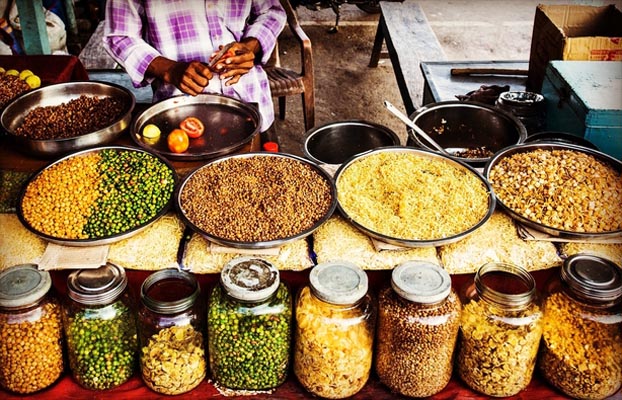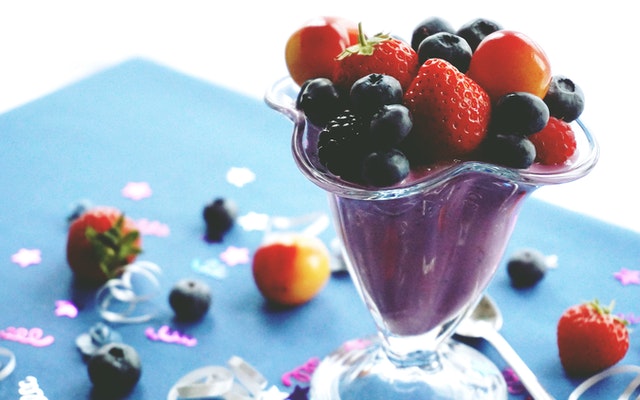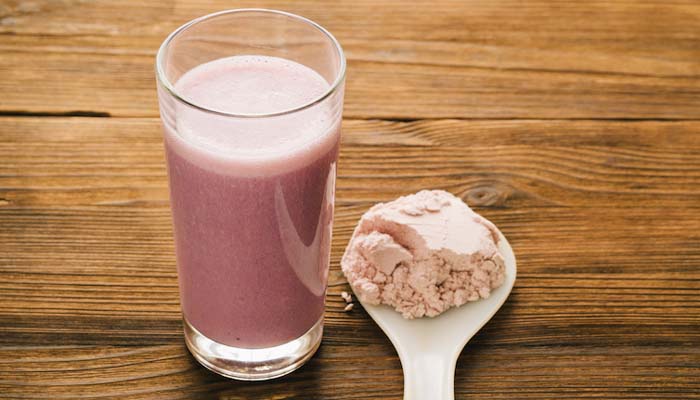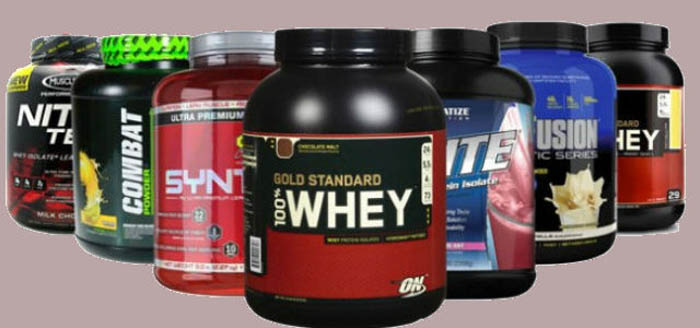
Proteins are the building blocks of life. They‘re amino acids that promote cell growth and repair. They’re an essential nutrient in the human diet. Animal products like meat, cheese, eggs, and fish are sources of protein but they are also high in cholesterol and saturated fat. Did you know that you don’t actually have to eat any animal products to get enough protein in your diet? Here are the best plant-based sources of protein:
1. Wheat Gluten or Seitan
Wheat Gluten or Seitan is a well-liked protein source by many vegetarians and vegans. It is formed by rinsing wheat-flour dough to remove fiber and starch . What’s left is a elastic, sticky mass of protein very similar to the look and texture of animal meat when cooked. It’s a good source of calcium and minerals, and it contains about 25 grams of protein per 100 grams. It’s the richest plant protein source on this list.
Wheat Gluten or Seitan is versatile and can be served like any other dish where meat is used, and can easily be mixed in any recipe.
The only downside of this protein source is that it should be avoided by people with gluten sensitivity or celiac disease.
2. Tempeh, Tofu, and Edamame
These three are made of soybeans. Soy is considered to be a complete protein, which means that it can provide the essential amino acids the body needs. They contain up to 19 grams of protein per 100 grams. Edamame is also rich in calcium, iron, vitamin K, folate, and fiber. Tempeh also has probiotics, magnesium, phosphorus, and B vitamins.
Tempeh is made by cooking slightly fermented soybeans then pressing them into a patty. It has a slightly nutty flavor.
Tofu is made by pressing together fermented bean curds very similar to how cheese is made. It doesn’t really have any taste but it absorbs the flavors of the dish it’s prepared with.
Both tempeh and tofu can be used in a wide variety of dishes like soups and sandwiches.
Edamame is immature soybeans. They’re steamed or boiled before eating and can be added in soups, salads, or eaten on their own. They have a slightly sweet taste.
3. Lentils
Lentils are part of the legume family, they’re mini versions of beans. They are rich in riboflavin, folate, manganese, fiber, carbohydrates, and protein. They contain around 9 grams of protein per 100 grams. The vitamins and minerals in lentils can lower bad cholesterol levels in our bodies and thus reduce the risk of cardiovascular disease. It’s fiber content also contributes to a healthier digestive system.
They can be used in many different dishes like soups, fresh salads, and dahl.
4. Chickpeas and Most Varieties of Beans
Chickpeas, kidney beans, pinto beans, and other varieties of beans contain high amounts of protein per serving. Most beans contain about 15 grams of protein per cooked cup. They are also good sources of carbohydrates, iron, fiber, folate, potassium, and manganese. Like lentils, they help reduce bad cholesterol levels in our bodies and thus reduce the risk of cardiovascular disease, help control blood sugar levels, and lower blood pressure.
Chickpeas can be made into hummus and beans can be added in almost any dish.
5. Green Peas
Green peas contain 9 grams of protein per cooked cup. They also contain carbohydrates, fiber, iron, thiamine, folate, manganese, and B vitamins, and vitamins A, C, and K. They’re rich in folic acid and have lower calories when compared to other kinds of beans. Green peas can help protect against diabetes, cancer, and cardiovascular disease.
Green peas are very popular as side dishes and can also be added to many recipes.
The downside of eating green peas, nutritious as they are, is that they also contain antinutrients. These are compounds that prevent the body from absorbing some nutrients and causes bloating. This is why fermenting, sprouting or soaking peas before eating is advisable as these preparation methods help remove the anti-nutrients. Mind your portions as well.
6. Spelt and Teff
Spelt and Teff are considered to be ancient grains.
Spelt, the ancestor of modern wheat, looks like wheat, but with a tougher husk that helps to protect the nutrients inside the grain. It’s an excellent source of protein, fiber, B vitamins, vitamin E, niacin, magnesium, and zinc. The fiber in spelt helps reduce bad cholesterol levels in the body. It contains 15 grams of protein per 100 grams.
Teff is a grain that’s very small in size and mainly consists of the bran and germ. Since the bran and germ are the most nutritious parts of any grain, this makes teff very nutrient-dense. It’s loaded with calcium, phosphorous, copper, iron, and thiamin. It’s very high in protein, carbohydrates, and fiber. It also doesn’t have gluten so it’s suitable for those with gluten intolerance. One cup of cooked teff contains about 10 grams of protein.
Spelt and teff are great alternatives to common grains like wheat and rice and can be made into flour. It can be used in baking and in a variety of recipes where grain is used.
7. Quinoa and Amaranth
Amaranth and Quinoa are considered “pseudocereals.” They have many properties similar to grain, are eaten like grains, but are actually seeds. Both contain 8–9 grams of protein per cooked cup. They are also sources of carbohydrates, fiber, B vitamins, and iron. They taste nutty and has a texture similar to brown rice.
Both Amaranth and Quinoa cook very fast and are excellent choices for a quick, healthy meal. They can be eaten just like any other grain and can be made into flour for baking as well.
8. Hemp Seeds
The seeds of the Cannabis Sativa plant called hemp seeds contain all the essential amino acids and essential fatty acids required to maintain a healthy body. Hemp seeds contain omega-3 and omega-6 fatty acids, calcium, iron, magnesium, and selenium. It contains 10 grams of easily-digestible protein per 28 grams. It’s known as an anti-inflammatory, it helps soothe skin conditions, as well as relieve symptoms of PMS and menopause.
You can sprinkle some hemp seeds in your smoothie or muesli bowls. It can also be used in salad dressings or home-made protein bars.
9. Chia Seeds
Chia seeds are from the Salvia Hispanica plant. They are rich in omega-3 fatty acids, antioxidants, calcium, selenium, and iron. They contain 6 grams of protein per 35 grams. Just like any other plant-based proteins, they help lower bad cholesterol levels, helps reduce the risk of cardiovascular disease, diabetes, and the minerals it contains help with bone health as well.
Chia seeds don’t really have flavor and are able to absorb water, turning into a jelly-like texture. This can be made into a pudding and added to smoothies. Or they can just be simply added to dishes and baked goods.
10. Nutritional Yeast
Nutritional yeast is a deactivated yeast, a strain of Saccharomyces Cerevisiae yeast. It’s sold commercially as food and looks like yellow powder or flakes. It’s a very good source of B vitamins, fiber, and some trace amount of minerals. It contains 14 grams of protein per 22 grams.
Since it has a cheesy flavor, it’s a popular substitute for cheese. It can be sprinkled on pasta, mashed potatoes, or popcorn. It’s also used to add richness in flavor to gravy, soups, and sauces.
11. Spirulina
Spirulina is a blue-green algae. It’s actually one of the oldest life forms on Earth which produce oxygen. It’s considered a superfood and is one of the most nutrient-dense foods on Earth. It contains 8 grams of protein per two tablespoons. It also has essential fatty acids, riboflavin, magnesium, and potassium. The natural pigment called phycocyanin, found in spirulina has powerful antioxidant, anti-inflammatory and anti-cancer properties. It helps reduce bad cholesterol and blood sugar levels in the body and helps make the immune system stronger,
It often comes in powder or tablet form and can be mixed in smoothies and drinks. Sometimes it’s also added in desserts.
12. Ezekiel Bread
Organic, sprouted whole grains like wheat, barley and spelt, as well as legumes like soybeans and lentils are what makes up Ezekiel bread. Two slices contain about 8 grams of protein.
Sprouting grains increases their amino acid content which boosts overall protein content. It increases fiber, vitamins A, C, and E content, and folate. It also reduces gluten which is good for those who are sensitive to it. Combining these sprouted grains with legumes further increases the bread’s amino acid profile.
13. Oats
Oats or oatmeal contains about 6 grams of protein per half a cup. It also contains fiber, folate, B vitamins, and other minerals like magnesium and zinc. They contain higher quality protein than other rice and wheat. Oatmeal has very few calories and is very filling so it helps people lose weight. The fiber content also helps keep a healthy digestive tract.
They can be eaten as porridge, can be added to muesli, granola, and smoothie bowls. It can also be made into flour to be used in baking.
14. Nuts, Nut Butters and Other Seeds
Nuts and seeds can be consumed as is or they can be made into butter. Almond butter and tahini are examples. Most nuts and seeds contain 5–7 grams of protein, depending on the nut and seed variety. They are also great sources of fiber and healthy fats, in addition to iron, calcium, B vitamins, vitamin E, magnesium, phosphorus, and selenium. They also contain antioxidants which we already know has many benefits for our overall health.
Remember that natural, raw, and unblanched versions of nut butter are the best choices. This way, any added sodium or fillers are avoided. These are best enjoyed on bread, crackers, or they can even be added in smoothies and porridge.
15. Protein-Rich Fruits and Vegetables
All fruits and vegetables contain protein, however, some contain more than others.
Broccoli, brussels sprouts, spinach, artichokes, sweet corn, potatoes, and sweet potatoes contain the most protein, about 4–5 grams of protein per cooked cup.
Guava, bananas, blackberries, and nectarines are fruits that contain a bit more protein than other fruits. They have about 2–4 grams of protein per cup.
16. Herbs and Spices
Herbs and spices are what adds life and flavor to many dishes. Did you know that there are a lot of them that also contain protein? Here are several that you can use to create delicious, protein-rich dishes.
- Turmeric
- Ginger
- Tarragon
- Paprika
- Basil
- Poppy seed
- Caraway Seed
- Dill seed
- Fennel seed
- Cumin seed
- Anise seed
- Celery seed
- Mustard seed
- Fenugreek seed
- Spearmint
- Parsley
- Garlic
- Dried chervil
- Curry powder
- Marjoram
- Red or Cayenne pepper
- Chili powder
Herbs and spices have many other benefits including lowering blood pressure, improves memory and brain function, they have anti-inflammatory effects, they have anti-cancer properties, helps boost immunity and fight infections, and allergy relief and prevention.
The bottom line
As long as all the foods on this list are incorporated into the diet, there are low chances of protein deficiency among those who choose to live on a plant-based diet.




